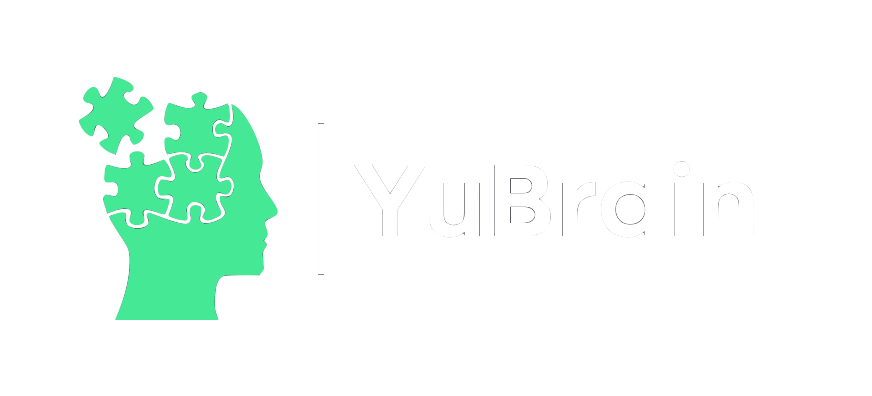Tabla de Contenidos
The Wonderful Wizard of Oz , by L. Frank Baum, is a book that has transcended throughout time and in many and very different parts of the world. More than a century after its publication, it remains a staple of popular culture (aided, of course, by the celebrated 1939 film adaptation starring actress Judy Garland).
Much of the novel’s popularity over the years is attributed to the amazing imagination that Baum brought to the work. However, equally valuable is the fact that the story lends itself to multiple interpretations. New generations continue to reinterpret the story, despite Baum’s own insistence in the original preamble that the story “was written solely to please today’s children.”
Technical Sheet of the Literary Work “The Wonderful Wizard of Oz”
Author: L. Frank Baum
Publisher: George M. Hill Company
Year of publication: 1900
Genre: Children’s novel
Original language of publication: English
Themes: childhood innocence, inner strength, friendship
Characters: Dorothy the Scarecrow, the Tin Woodman, the Cowardly Lion, the Wicked Witch of the West, the Wizard , Glinda the Good Witch of the North
Notable Adaptations: The Wizard of Oz (1939, director Victor Fleming)
plot of the play
Dorothy is a girl who lives in Kansas with her uncle Henry and her aunt Em. The place where she lives is hit by a cyclone; terrified, Dorothy’s dog Toto hides under the bed. Dorothy goes looking for him while her aunt and uncle hide in the basement. The cyclone takes the whole house far away from Kansas, with Dorothy and Toto in it.
When they land, Dorothy discovers that she has arrived in Munchkinland, corresponding to part of the eastern region of the Land of Oz. The house has landed and killed the Wicked Witch of the East. Dorothy finds herself in a place of extraordinary beauty, but unknown to her, and she wants to return to her uncle and aunt. Glinda, the Good Witch of the North, appears, gives Dorothy the Wicked Witch’s silver slippers, and tells her that to get back home she will have to travel the Yellow Brick Road to the Emerald City to ask the Wizard for help.
As Dorothy and Toto travel, they meet three companions: a scarecrow, a tin woodcutter, and a cowardly lion. Everyone is missing something – the Scarecrow needs a brain, the Tin Woodman needs a heart, and the Lion needs courage – so Dorothy suggests they all travel to the Emerald City together to ask the Wizard for help. In the Emerald City, the Wizard agrees to give each of them what they seek if they kill the Wicked Witch of the West.
In Winkie land, ruled by the evil witch of the West, who sees them coming and attacks them several times along the way. Later, the Witch uses a magical Golden Cap to summon the monkeys who rip the stuffing out of the Scarecrow, dent the Woodsman, and capture Dorothy, Toto, and the Lion.
The Wicked Witch makes Dorothy her personal slave and takes one of her silver shoes. This angers Dorothy who, in a fit of rage, throws water at the Witch, drenching her from head to toe; surprisingly the witch begins to shrink until she melts away. The Winkies were the wicked witch’s slaves and they ask the Tin Woodman to become her king, a position she accepts once Dorothy returns home. Dorothy uses the Golden Cap for the flying monkeys to take them back to the Emerald City.
There, Toto accidentally reveals the truth: the Wizard is just an ordinary man who traveled from Omaha in a hot air balloon many years before. He gives the Scarecrow a new stuffing for his head as a brain, the Woodman a heart of silk, and the Lion a potion to give him courage. The Wizard agrees to take Dorothy home with him in his balloon, naming the Scarecrow ruler in his absence but, once again, Toto runs off after a cat and Dorothy, not wanting to leave her little dog in the land of Oz, persecutes. The Wizard accidentally cuts the strings of the balloon and it floats away. Dorothy watches as her hopes of returning to her home are dashed.
Dorothy asks the flying monkeys to take her home, but they cannot cross the desert that borders Oz on all sides. She and her friends set out for Quadling Country, which lies on the edge of the desert, to seek the help of Glinda, the good witch. On the march through the forest, the animals ask the Lion to become their king, and he accepts, but once Dorothy returns to her house. The flying monkeys are summoned for the third and final time to fly them the rest of the way to Glinda’s castle. The good witch tells Dorothy that her silver shoes will take her wherever she wants to go, and to wear the Golden Cap to ask the flying monkeys to take their friends to their respective new kingdoms, once the monkeys have accomplished this task. they will be free forever.
Dorothy happily returns to Kansas with Toto, greeted by her Aunt Em, absolutely happy to be home.
Main characters
- Dorothy : She is the protagonist of the story. She is a young woman from Kansas who lives with her aunt and uncle on her farm. She maintains a cheerful and childish attitude in the face of adversity and shows bravery in frightening moments. She has little patience with deceit and indecision.
- The Scarecrow : A scarecrow whose greatest wish is to have the intelligence that he thinks he lacks. He joins Dorothy’s journey to find the Wizard and ask him for a brain.
- Tin Woodman : A former woodcutter who was cursed by the Wicked Witch of the East. His spell caused an enchanted ax to chop off each of his limbs. The Woodsman slowly replaced every part of his body with tin material, but was unable to replace his heart. He wants to ask the magician for a heart.
- The Cowardly Lion : A lion who believes himself to be a coward.
- The Wicked Witch of the West : She is the sister of the Wicked Witch of the East (who died accidentally when Dorothy threw water at her). She is very powerful, she is always angry and has a lot of greed and lust for power.
- The Wizard : He is a normal man who, like Dorothy, came to Oz by accident. Considered a powerful wizard by the inhabitants of Oz, he takes advantage of the situation and builds an illusion of immense power, though he means no harm.
- Glinda, the Good Witch of the North – Glinda is a kind and merciful witch, but her influence wanes far from her northern home. She tries to protect and guide Dorothy through her adventures.
Themes Presented in the Book
Many of the book’s themes can be seen as simple lessons that Baum wanted to pass on to his young readers. Among others, the following:
- Childhood Innocence: The story provides a conception of childhood that combines duty, virtue and good behavior with an overflowing imagination. Baum describes Dorothy thoroughly enjoying her journey through the magical world of Oz, while remaining determined to return home.
- Inner Strength: Throughout the story, many of the characters start out believing that they lack some fundamental organ or value: brains, courage, and heart. Finally, Dorothy, thanks to her determination to return home in the company of her companions, makes them realize that they have always had what they hoped to ask for from the wizard.
- Friendship: The ability to help and care for others trumps greed and the wrath of the wicked witch. None of the characters would have found what she was looking for without the help of the others.
Literary style
The writing is simple, and is inspired by classic fairy tales. The Wonderful Wizard of Oz is written in a simple way, making it easy for children to read and understand.
Baum makes extensive use of descriptions, emphasizing bright colors and an abundance of detail to generate mental images.
Baum also uses repetition strongly. Goals, important details, and other aspects of the story are repeated, as are plot events; there are several subplots within the main one, like Dorothy’s wish to return home, for example. On the other hand, Baum facilitates children’s understanding by focusing each chapter on a single main event, with a clear closure when the chapter ends. This style makes it easy to read the story in several sessions, just like a parent would with a child.
Interpretations on the literary work of the Wizard of Oz
The Wonderful Wizard of Oz is often interpreted as more than just a children’s story. Complex political, social and historical theories have been attributed to him.
- Populism : One of the most famous theories involves the populist movement that collapsed at the end of the 19th century, linked to the debate on monetary policies. According to this theory, Dorothy represents the American people as innocent and easy to deceive, while other characters represent social or political aspects of the time. The economic forces and theories are represented by the road paved with yellow bricks (gold standard) and the Emerald City (paper money), and the Wizard is the deceitful politicians who manipulate the public. That theory was long developed, but the deeper you delve into it, the less sense it makes.
- Religion The Wonderful Wizard of Oz is frequently identified as an allegory appropriated by both Christians and atheists, and usually using the same symbols, albeit in different ways . For believing readers, the story can be interpreted as an exercise in resisting temptations and fighting against evil through faith. To atheists, the Wizard is a deity who is ultimately revealed to be a sham.
- Feminism : There is evidence of a feminist subtext in the novel. All the male characters have shortcomings: either they are fake, or they are cowardly and cold, or they are part of oppressed or passive groups. The women, especially Dorothy and Glinda, are the real powers that come into play in the land of Oz.
The legacy of literary work
The Wonderful Wizard of Oz continues to be read by children and adults around the world. It has been adapted many times for stage and screen, and continues to influence both children’s literature and adult fiction. The imagery and symbolism of the story, the yellow brick road, the silver shoes (turned into ruby slippers for the classic film), the green-skinned witch, the companions overflowing with fantasy, are used in quite a few new works as characters. reinvented and reinterpreted according to the new times.
The book is often described as the first American fairy tale, and in fact is one of the first children’s stories to make specific reference to American places and culture.
Outstanding Phrases within the Work «The Wonderful Wizard of Oz»
“There is no place like home”.
“Oh no, my dear, the truth is that I am a good man, very good; but mind you, I’m a very bad magician, I have to admit.
“The brain does not make one happy, and happiness is the best thing in the world.”
“True courage is in facing danger when you are afraid, and you have that kind of courage in abundance.”
“How can you talk if you don’t have a brain?
“I don’t know… But some brainless people talk a lot… don’t they?



